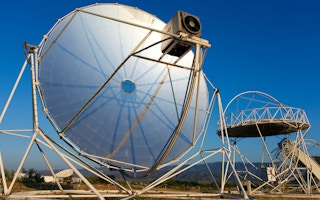Researchers at the Massachusetts Institute of Technology (MIT) have recently discovered a new way to trap light using a specific arrangement of photonic crystals.
Dubbed the ‘perfect mirror’, it is unlike the typical mirrors or reflective surfaces that ‘block’ light causing it to deflect or bounce back. The ‘perfect mirror’, at a specific wavelength and angle, reflects light completely. No photons are scattered or lost in distortion, which indicates potential practical applications and advancements for various industries like solar.
Currently, the solar industry is divided into two sets of different technologies: solar photovoltaics and concentrating solar power (CSP), or a type of power generation technology that utilises mirrors and lenses to harness the sun’s energy to heat liquid and produce steam, according to the International Renewable Energy Agency (IRENA). The latter stands to benefit from the ‘perfect mirror’.
Professor of physics Marin Soljačić and John Joannopoulos led the research team behind the discovery. The group was initially studying the behavior of a photonic crystal when they chanced upon the uncanny phenomenon.
In the science journal Nature, where this was first reported, the team said: “Here we predict and show experimentally that light can be perfectly confined in a patterned dielectric slab, even though outgoing waves are allowed in the surrounding medium. Technically, this is an observation of an ‘embedded eigenvalue’—namely, a bound state in a continuum of radiation modes—that is not due to symmetry incompatibility.”
In more non-scientific terms, the university explained in a statement: “Light is found to be confined within a planar slab with periodic array of holes, although the light is theoretically ‘allowed’ to escape.”
The light escaping is the perfectly reflected light, released at a particular wavelength of red light at an angle of 35 degrees, and not the light oftentimes absorbed by the photonic crystal on most angles. At this specific angle, no tiny amount of light is lost due to scattering.
MIT, relaying what Yale University physics professor A. Douglas Stone said, stated: “This work is “very significant, because it represents a new kind of mirror which, in principle, has perfect reflectivity.” Stone, who was not part of the research group, noted how the breakthrough is unexpected given that photonic crystal surfaces follow the laws of refraction and reflection.
The team, while still focused in understanding this discovery, said the mirror could lead to many practical applications. For example, there are many optical devices that need to confine light like lasers, fibre optics and solar cells. One of the graduate student researchers Chia Wei Hsu also suggested chemical or biological sensors.
For the solar industry, an advancement such as this can propel CSP technology. The ‘perfect reflectivity’ can increase energy generation, which IRENA said is more advantageous for large-scale use compared to photovoltaics since it can produce energy despite intermittent sunshine.

















